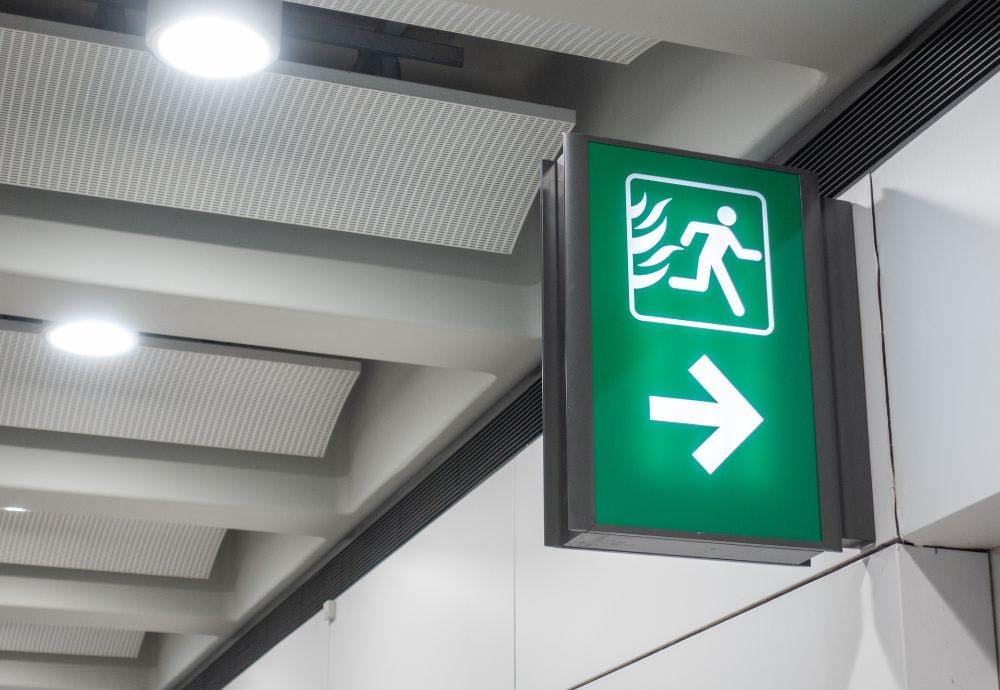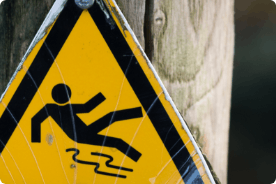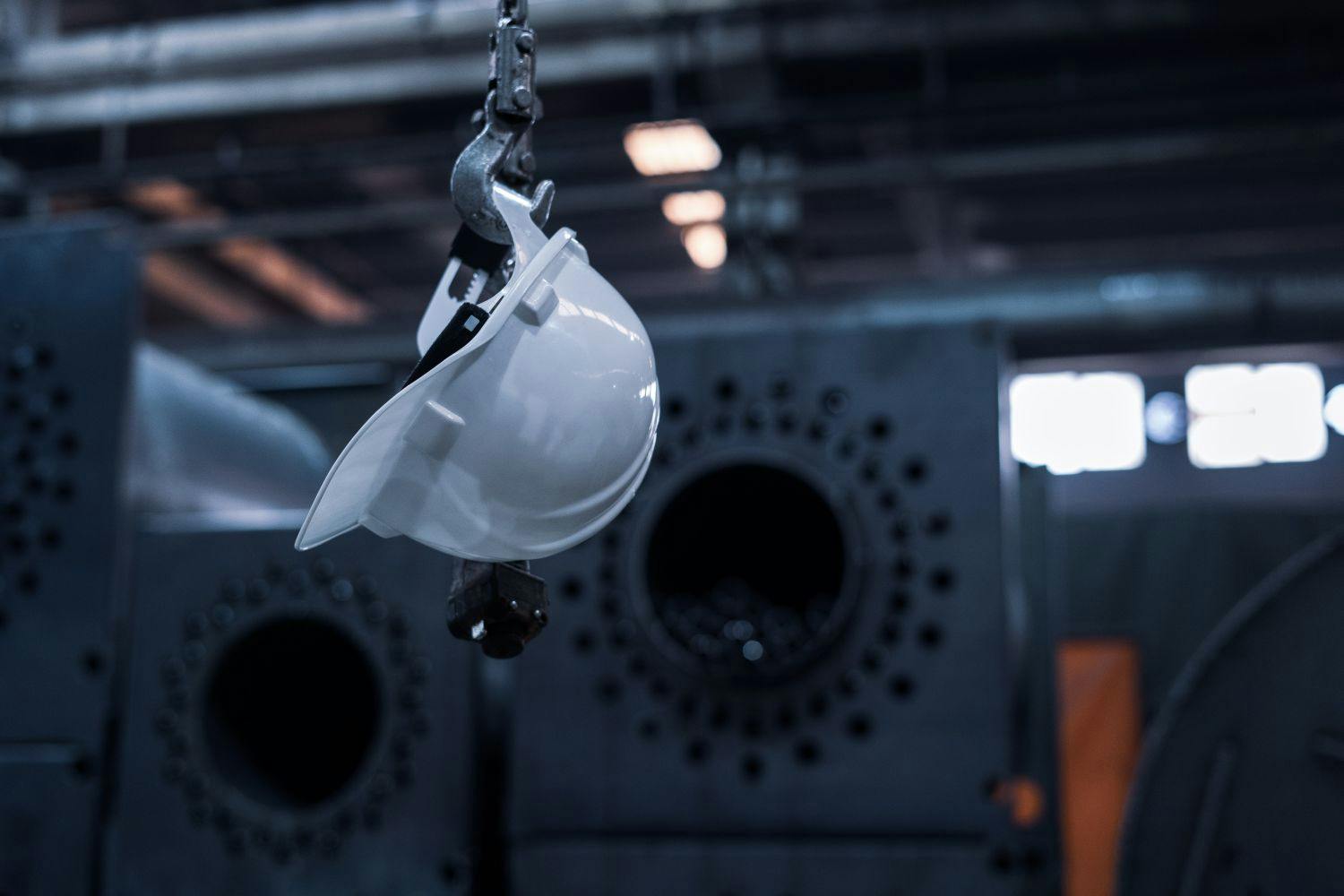First published on Friday, Sep 29, 2023
Last updated on Wednesday, Oct 04, 2023
Is your business prepared for the new fire safety guidelines coming into effect on October 1, 2023? These handy tips will provide a framework to ensure that fire safety in your premises is not only a legal obligation but a moral responsibility to protect lives and your property.
In this article, we delve into the crucial updates and regulations that have been introduced to improve fire safety in buildings regulated by the Regulatory Reform (Fire Safety) Order 2005. So, get ready to learn about the key changes, the role of Responsible Persons (RPs), fire safety equipment maintenance, and more.
Read on for the latest fire safety guidelines that aim to strengthen fire safety measures taken in the workplace. And get updates on the more general guidelines for fire safety to make sure you stay safe and well-informed about the new regulations.
New Fire Safety Guidelines 2023: Key Changes
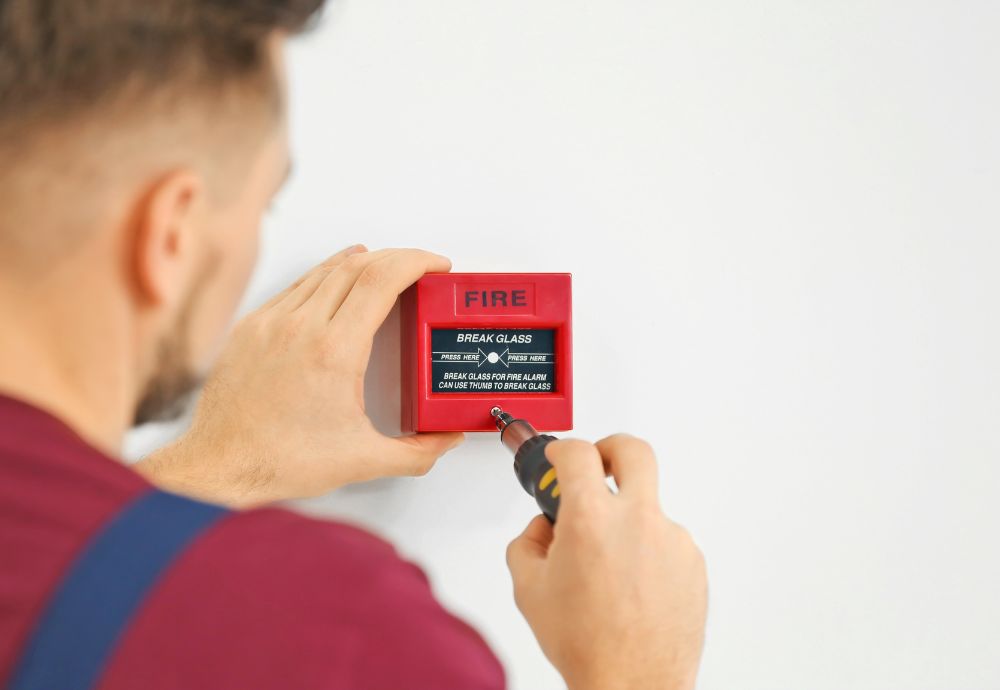
Significant changes are on the horizon for the fire safety landscape in England and Wales with the implementation of new guidelines scheduled for October 1, 2023. These guidelines focus on:
Strengthening fire safety measures
Modernising fire safety guides
Enhancing the safety of buildings regulated by the Regulatory Reform (Fire Safety) Order 2005
The Fire Safety Act 2021 and Fire Safety (England) Regulations 2022 augment the Fire Safety Order, emphasising the need for Responsible Persons (RPs) to adhere to the updated regulations.
The primary modifications to fire safety regulations include:
Bolstering fire safety measures
Updating fire safety guides
Verifying the proficiency of fire risk assessors
Disseminating relevant fire safety instructions
Guaranteeing regular reviews and documentation of fire risk assessments
These modifications listed above improve fire safety across various premises, in compliance with the Building Safety Act, ranging from high-rise residential buildings to commercial properties.
Strengthening Fire Safety in FSO Regulated Premises
A wide array of premises in England and Wales, including commercial buildings, industrial premises, and residential buildings with shared areas, are governed by the fire safety law, specifically the Fire Safety Order (FSO) regulations. These regulations require responsible persons to ensure fire safety measures are in place.
Phase 3 of the Fire Safety Reform Program aims to promote fire safety in premises regulated by the FSO through increased collaboration and coordination between Responsible Persons (RPs). To avert and reduce fire risks, RPs are required to:
Regularly review and document fire risk assessments
Install and maintain fire fighting equipment such as portable fire extinguishers
Establish emergency lighting and fire alarm systems
Failure to comply with the FSO regulations can lead to severe consequences, including fines, imprisonment, and other sanctions.
Updated Fire Safety Guides
Three updated fire safety guides have been introduced in the new fire safety guidelines, superseding the obsolete short guide to making premises safe from fire. These guides provide up-to-date information on:
Fire safety legislation and guidance for those with a legal duty for fire safety in a relevant building
The Regulatory Reform (Fire Safety) Order 2005
Practical fire safety guidance for existing premises
Guides produced by Communities and Local Government
Fire safety guides for business premises
This information is essential for ensuring the safety of domestic premises.
Compared to the outdated short guide, the revised fire safety guides propose a more comprehensive and updated approach to fire safety. This shift in focus ensures that building owners and RPs have access to the most relevant information and are equipped to implement effective fire safety measures.
The Role of Responsible Persons (RPs)
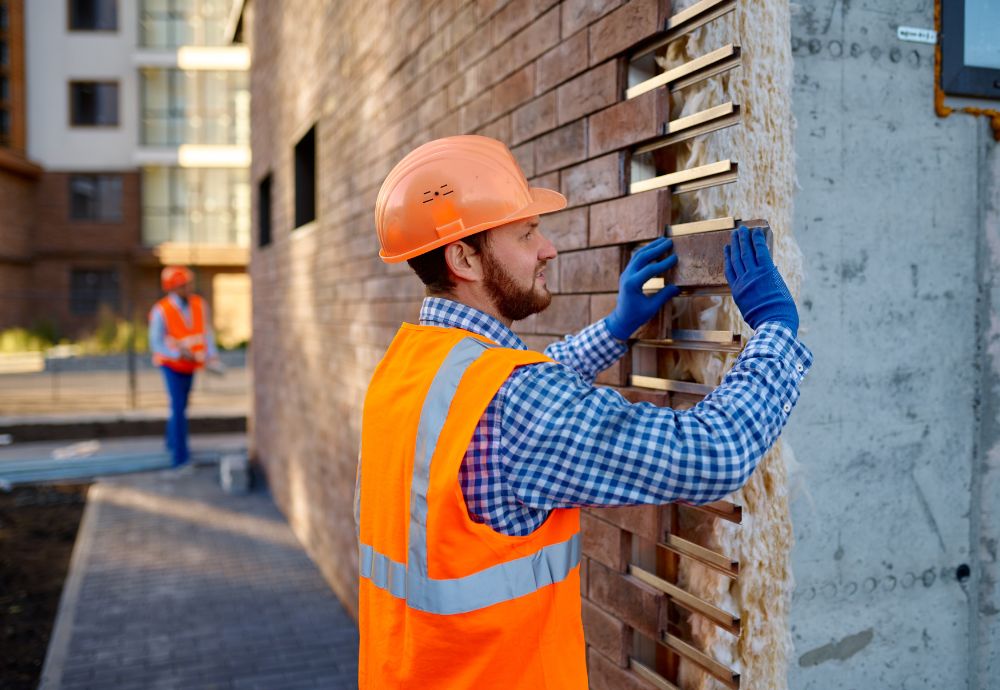
Responsible Persons (RPs) play a vital role in ensuring fire safety in buildings regulated by the Fire Safety Order. The Fire Safety Act requires Residential Property (RP) owners to manage and reduce the risk of fire from multi-occupied residential buildings. This includes:
The structure and external walls
Cladding
Balconies
Windows
Entrance doors to individual flats that open into common parts
The fulfilment of these responsibilities is paramount for occupant safety and the prevention of fire-related incidents. Ensuring the competence of fire risk assessors helps guarantee that they possess the necessary qualifications and expertise to effectively assess a building’s fire safety and identify potential hazards.
Sharing fire safety information ensures that all occupants are aware of the fire safety protocols in place and know how to react in the event of a fire.
Ensuring the Competence of Fire Risk Assessors
It’s essential to establish the competence of fire risk assessors to make sure they possess the necessary qualifications and expertise to conduct efficient building fire safety assessments and identify potential hazards.
Currently, there’s no legal obligation for the responsible person to guarantee the proficiency of their fire risk assessors. However, the government is currently developing a strategy to introduce this vital aspect of fire safety.
At present, the FSO requires RPs to appoint a competent person to assist them in applying fire safety measures. The FSO defines a competent person as someone who has sufficient training, experience, or knowledge of fire safety to enable them to properly assist a Responsible Person in risk assessing for fire.
To guarantee the proficiency of fire risk assessors, it is necessary to ascertain that assessors are suitably qualified and experienced, offer training and guidance, and frequently review and document assessments. This proactive approach to fire safety will contribute to the reduction of the risk of fire and ensure the safety of buildings and their occupants.
Sharing Fire Safety Information
Responsible Persons (RPs) are obligated to document and disseminate fire safety information, thereby facilitating enforcement authorities in taking action against any non-compliance. It’s important to document and disseminate fire safety information to ensure that all building occupants are aware of the established fire safety protocols and know how to respond in case of a fire.
Failure to perform regular reviews and document fire risk assessments may invite fines, legal action, and other penalties. It is crucial for RPs to prioritise the sharing of fire safety information to ensure the safety of all building occupants and to maintain compliance with fire safety regulations.
High-Rise Residential Buildings and Fire Safety
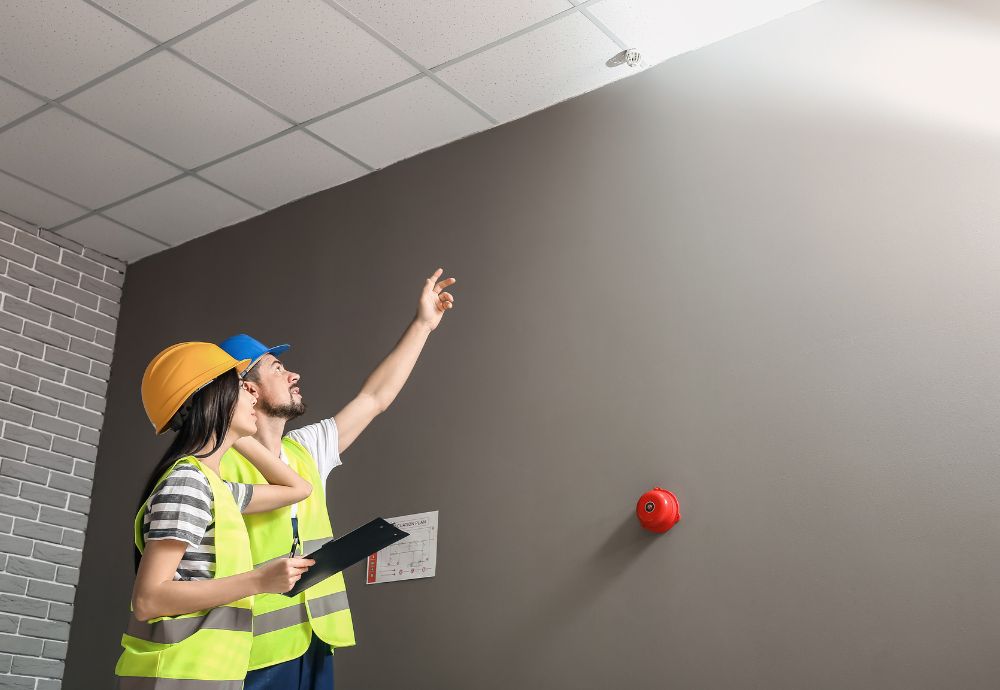
High-rise residential buildings face additional fire safety requirements due to the increased risk associated with their height and the potential for fires to spread quickly. These requirements include regulations for external wall systems and flat entrance doors, as well as the obligation to provide information to Fire and Rescue Services. Responsible Persons (RPs) must adhere to these additional safety measures to ensure the safety of occupants in high-rise residential buildings.
Any building that is 18 metres tall or higher, or at least seven storeys tall, must be registered with a Building Safety Regulator (BSR).
It will be a criminal offence for any qualifying building not to be registered with the BSR after 1 October 2023. Registration opened in April 2023.
Comprehending and implementing these extra fire safety requirements is key to maintaining a secure living environment in high-rise residential buildings. Proper adherence to regulations and effective communication with emergency services can significantly reduce the risk of fire-related incidents and ensure the safety of all occupants.
External Wall Systems
External wall systems utilised in high-rise residential buildings can comprise various components such as outer cladding, cavity/fire barriers, and insulation materials. These systems must comply with building regulations and standards pertaining to fire safety to ensure the safety of occupants.
Various materials and construction methods may be employed depending on the particular building and its requirements. It is crucial for RPs to ensure that external wall systems meet fire safety standards and are regularly inspected and maintained to prevent the spread of fire and protect the lives of building occupants.
Flat Entrance Doors
Flat entrance doors in high-rise residential buildings provide access to individual flats from common areas and must adhere to specific fire safety regulations. These doors, also known as fire doors, must be fire-resistant and self-closing in order to impede the propagation of fire.
Regular inspection and maintenance of flat entrance doors are essential to guarantee their compliance with fire safety regulations. Ensuring that these doors meet fire safety standards not only improves the overall safety of a high-rise residential building but also helps prevent the spread of fire and protect the lives of building occupants.
Fire Risk Assessments and Compliance
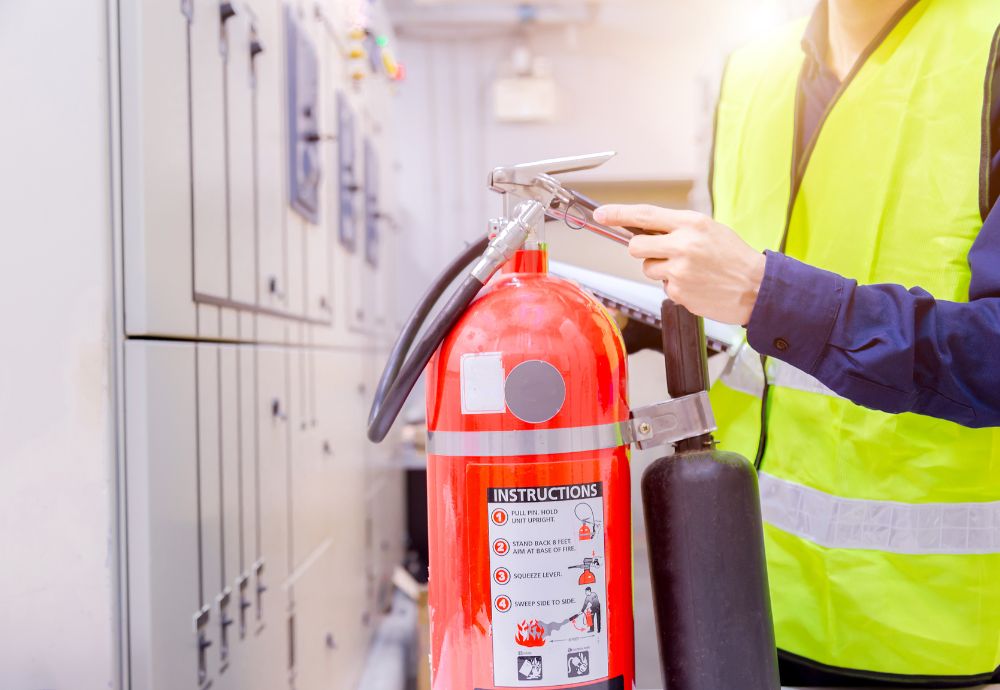
Fire Risk Assessments are a fundamental element of fire safety in businesses and are crucial for compliance with fire safety regulations. These assessments involve identifying fire hazards and making recommendations for improving fire safety precautions.
Making sure you follow fire safety regulations requires conducting Fire Risk Assessments, due to your legal duties to maintain a written record of the assessment.
Non-compliance with fire safety regulations may result in fines, legal action, and other penalties. It is essential for businesses to prioritise fire risk assessments and compliance to ensure the safety of their employees and customers and to avoid potential penalties.
Regular Reviews and Documentation
Regular reviews and documentation of fire risk assessments are of great importance for various reasons, including:
Ensuring continued compliance
Identifying and addressing emerging risks
Ensuring employee safety
Meeting legal requirements
It’s required by law for businesses with five or more employees, a license, or an alterations notice to document their Fire Risk Assessment.
Failure to perform regular reviews and document fire risk assessments may invite fines, legal action, and other penalties. Regularly reviewing and documenting fire risk assessments are essential for maintaining a safe working environment and ensuring compliance with fire safety regulations.
Penalties for Non-Compliance
Failing to adhere to fire safety regulations can have serious consequences, including:
Financial penalties
Incarceration / prison terms
Prosecution with substantial fines
Not having an appropriate Fire Risk Assessment and suitable fire safety precautions can have serious consequences. Prosecution with substantial fines or even prison terms may be imposed if extreme negligence is demonstrated.
It’s vital for businesses to prioritise compliance with fire safety regulations and take the necessary steps to ensure the safety of their employees and customers. Investing time and resources in proper fire risk assessments and compliance measures can help avoid potential penalties and protect lives and property.
Fire Safety Equipment and Maintenance

Maintenance of fire safety equipment is fundamental to ensure fire safety. Essential fire safety equipment includes portable fire extinguishers, emergency lighting, and fire alarm systems. Regular inspection and testing of fire safety equipment help ensure that it is functioning properly and able to provide the necessary protection during a fire emergency.
Failure to maintain fire safety equipment and adhere to fire safety regulations may result in fines, imprisonment, or both.
Portable Fire Extinguishers
Portable fire extinguishers serve to quell small fires before they get a chance to spread and help those evacuating the building to clear an escape route. Businesses must provide and maintain portable fire extinguishers that meet industry standards, such as being UL-listed and adhering to NFPA 10 standards.
Regular inspection and maintenance of portable fire extinguishers are essential to ensure that they function properly and comply with fire safety regulations. Again, failure to adhere to fire safety regulations may result in fines, legal action, and other penalties.
Emergency Lighting and Fire Alarm Systems
Emergency lighting and fire alarm systems are integral components of a comprehensive fire safety system. Emergency lighting provides illumination in the event of a power outage or emergency situation, directing occupants towards exits and escape routes. Fire alarm systems detect the presence of fire or smoke and alert occupants of the building, initiating the necessary emergency response.
Regular testing of emergency lighting and fire alarm systems is of paramount importance, ensuring that they are operating correctly and can provide the necessary illumination and warning in the case of a fire emergency. Regular testing assists in identifying any potential issues with the system before they become a problem, helping to guarantee the protection of occupants during a fire emergency.
Fire Safety Training and Evacuation Procedures
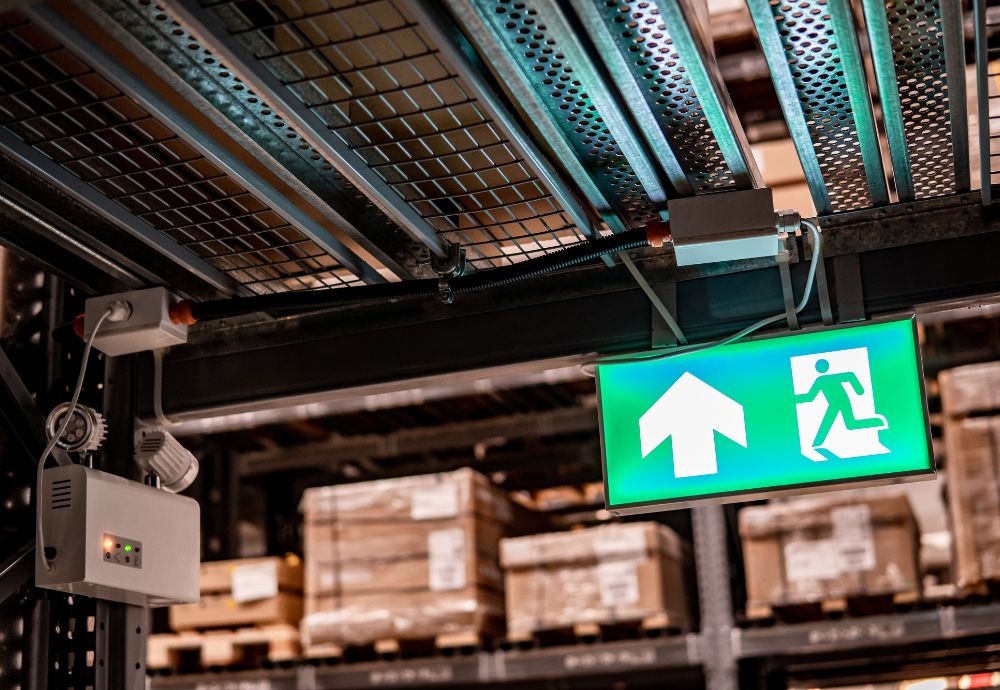
Businesses need to prioritise fire safety training and evacuation procedures to ensure the safety of their employees and customers during a fire event. Some key steps to take include:
Providing employees with fire safety training
Conducting regular refresher training
Organising fire drills
Designating Fire Marshals
These measures are essential to ensuring that personnel and customers are aware of the correct evacuation procedures in the event of a fire.
Fire Marshals can also assist with evacuation and contacting emergency services. Investing in fire safety training and evacuation procedures not only improves overall safety but also helps businesses comply with fire safety regulations and protect lives and property.
Summary
In conclusion, the new fire safety guidelines coming into force on October 1, 2023, emphasise the importance of strengthening fire safety measures, updating fire safety guides, and ensuring the competence of fire risk assessors. It is crucial for Responsible Persons (RPs) to adhere to these guidelines and prioritise fire safety in buildings regulated by the Regulatory Reform (Fire Safety) Order 2005.
By investing time and resources in fire safety training, equipment maintenance, and compliance measures, businesses and building owners can ensure the safety of their employees, customers, and occupants. Staying informed and proactive about fire safety is the key to protecting lives and property and ultimately creating a safer future for all.
Frequently Asked Questions
What are the new fire safety Regulations for 2023?
Since January 2023, Responsible Persons for multi-occupied buildings over 11 metres have had to carry out quarterly checks of all fire doors in communal areas and annual checks on flat entrance doors. Additionally, they must record their Fire Risk Assessment (FRA) in full, appoint a competent person to assist in making/reviewing the FRA, and record the identity of any appointed persons.
What is the new fire safety legislation?
The new fire safety legislation clarifies the requirement for Responsible Persons to record their Fire Risk Assessment in full, ensure they do not appoint someone to assist in making or reviewing the FRA unless they are competent, and record the identity of any person appointed. They must also reduce, assess, and manage the fire risks posed by the structure, external walls, and doors opening onto common parts of the building.
What are the new fire safety guidelines coming into force on October 1, 2023?
From October 1, 2023, fire safety measures will be strengthened, updated guides provided, and the competence of fire risk assessors verified, to ensure greater building safety in accordance with the Regulatory Reform (Fire Safety) Order 2005.
What is the role of Responsible Persons (RPs) in fire safety?
Responsible Persons are essential for fire safety, verifying the competence of assessors, providing safety information and adhering to regulations.
What are the additional fire safety requirements for high-rise residential buildings?
High-rise residential buildings require further fire safety measures, such as guidelines for external walls and entrance doors, as well as providing information to emergency services.
How BrightHR can support you with the changing fire safety regulations
Staying on top of changing legislation especially high-risk safety precautions can be daunting for business owners. But BrightHR’s end-to-end health & safety software can help!
BrightSafe’s smart health & safety software has lots of features to help you stay on top of your legal obligations when it comes to staff safety. For example, you can rely on our extensive template library which covers over 600 risks and includes risk assessment templates and essential policies on general fire safety, fire safety awareness, fire alarm testing, fire evacuation planning, and more.
You can also check out our current and on-demand webinars for advice from industry-leading experts on the latest topics. Get practical, jargon-free advice and easy-to-follow tips to make your workplace safer.
And if you need more in-depth support to prepare ahead of health & safety spot checks, our unlimited 24/7 advice is here to back you up, whenever you need support.
Get in touch with us today and we will guide you every step of the way. Our experts are just a phone call away on 0844 728 0251.
Not a BrightSafe customer? Get better peace of mind when it comes to your workplace safety. Learn more about 24/7 compliant health & safety software and advice.
